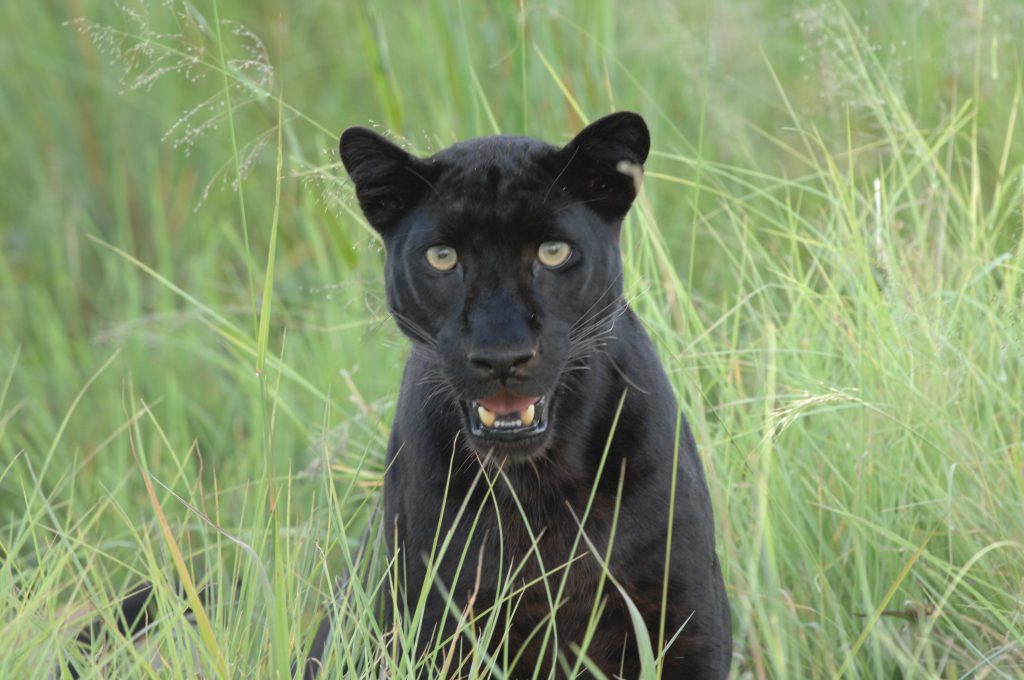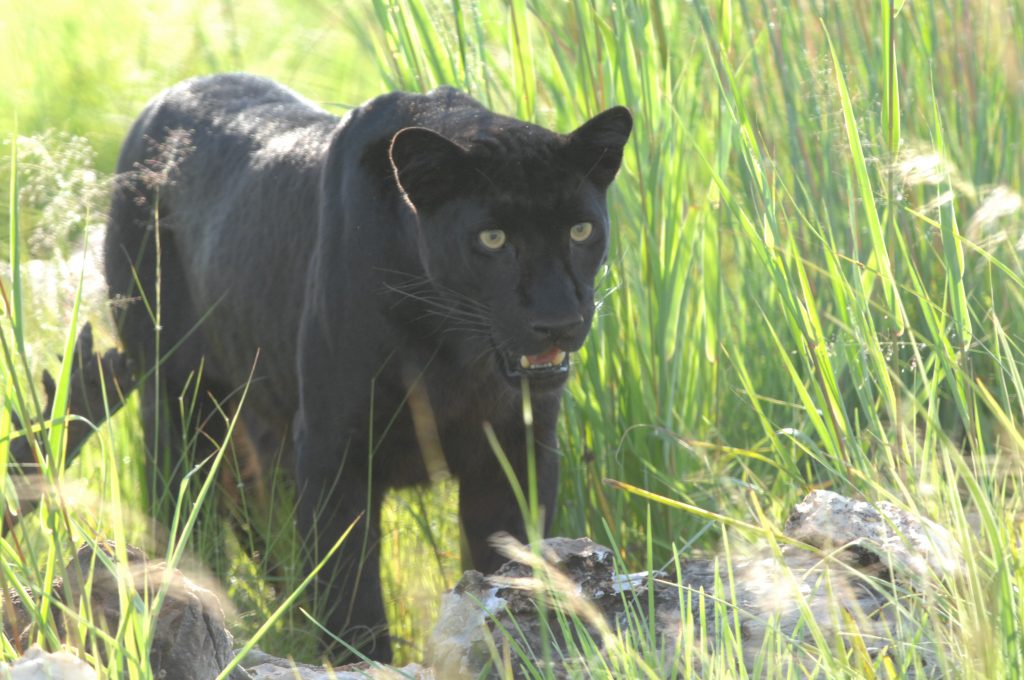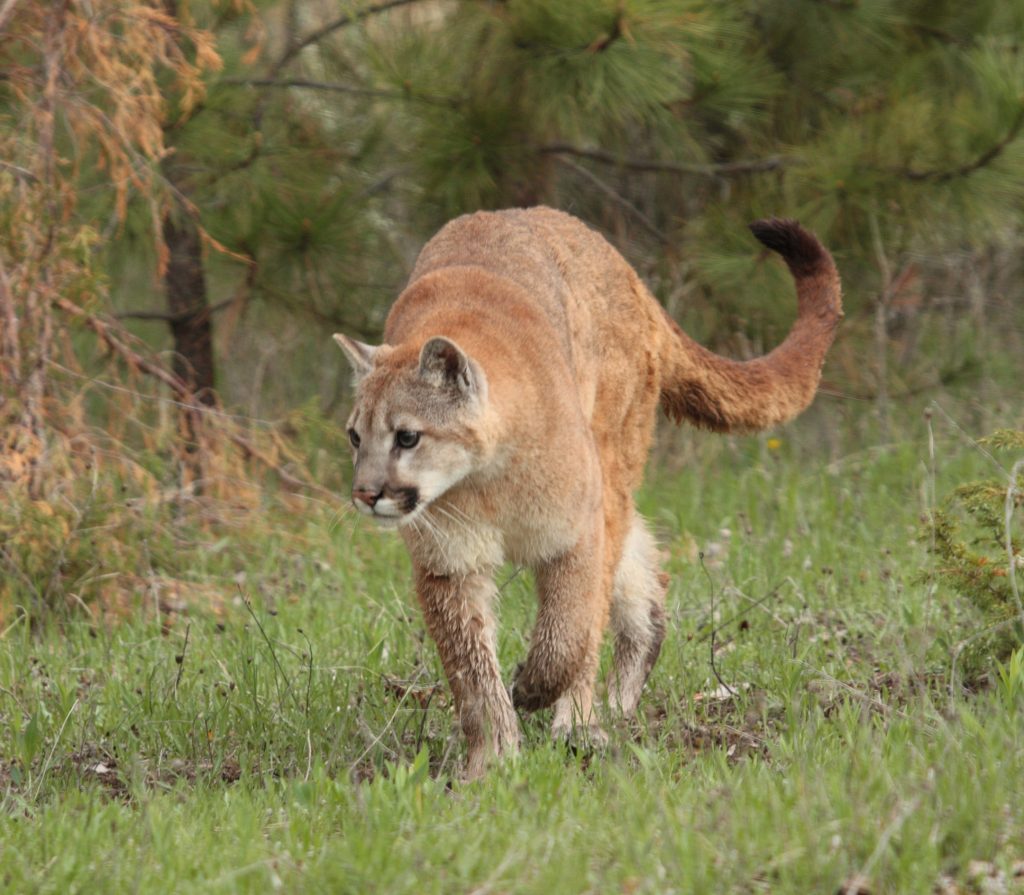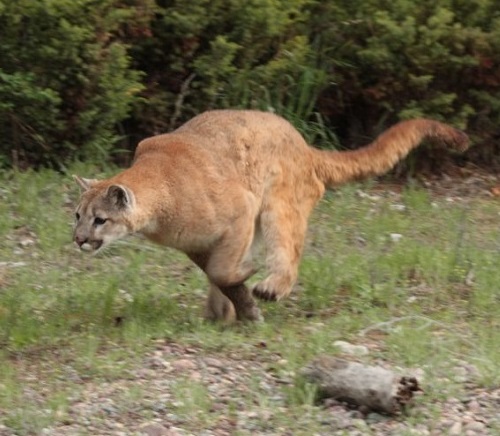Panthers & Pumas Explained
Panthers
Panther is a general word, it does not refer to a species of wild cat. Panther is most commonly used to describe three different types of cat in the wild:
Leopards in their black form (melanistic leopards).
Jaguars in their black form (melanistic jaguars).
Pumas (also called mountain lions and cougars) in Florida and in the eastern States of North America.
Black leopards: Around 80% of credible big cat reports in Britain resemble black leopards (Panthera pardus). Black leopard parents breed on black. The black fur colour-morph is a result of melanism, which comes from a recessive gene mutation, so black leopards are also called melanistic leopards. Black leopards can occur throughout the leopard’s natural range, but key populations of black leopards are present today in the Malay peninsula and in Java.


Black jaguars are also known as black panthers. Jaguars are more heavy-built than leopards and capable of taking down larger prey. Jaguars are confident swimmers, so can stalk prey at watersides. Unlike black leopards, two black jaguar parents can create a small proportion of spotted jaguars amongst a litter (around 25% from zoo studies). The above factors relating to jaguars do not seem to be apparent in the large black cats reported in Britain.
Pumas
Most other reports of larger cats in Britain conform to mountain lions, a sandy-grey cat from the Americas. Mountain lions are also known as cougars and pumas (Puma concolor).


Pumas and black leopards – the similarities
Leopards and pumas are similar in their scale, their form, behaviour, their diet and in their ability to live close to people largely unseen. They are highly versatile and are generalists. They live their lives as stealthy ambush predators. These cats were and in some places continue to be kept by people as trophy pets. They have also been kept in Britain as guarding-animals especially in the scrap metal and metal processing industry.
Other cat candidates in Britain
Some of the medium-large black cats reported in Britain may not be black leopards, which adds to the puzzle.
As a further twist, a small proportion (around 5-10%) of credible big cats reports in Britain resemble a lynx. The Eurasian lynx (Lynx lynx) was native in Britain until at least 1,300 years ago.
Need for more primary evidence
It is helpful to have the ongoing and consistent reports from witnesses to suggest what the large cats encountered in Britain may be. Hopefully in time, more and better primary evidence will clarify (or challenge) the judgements being made on the cats’ identity from the trends of these reports.



